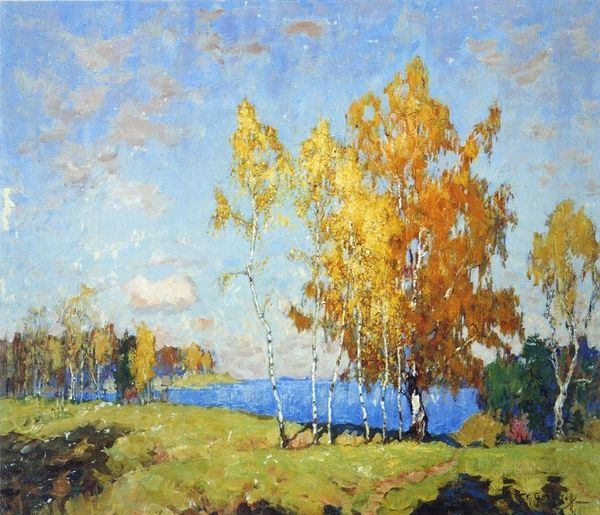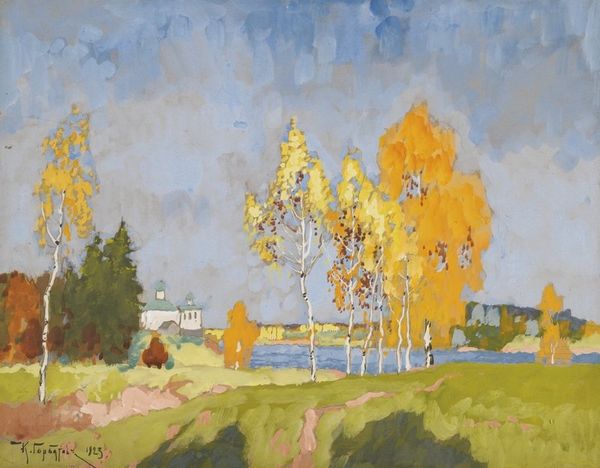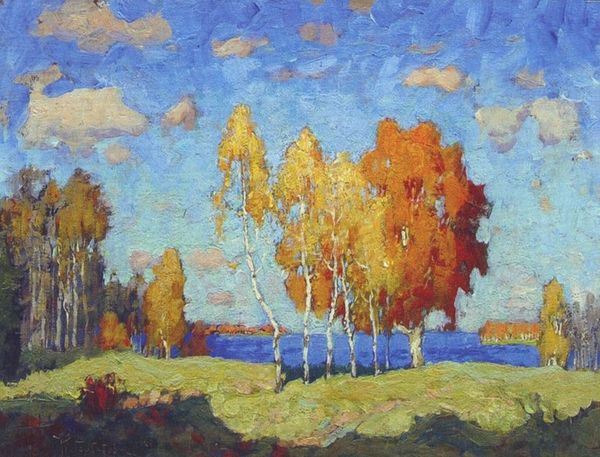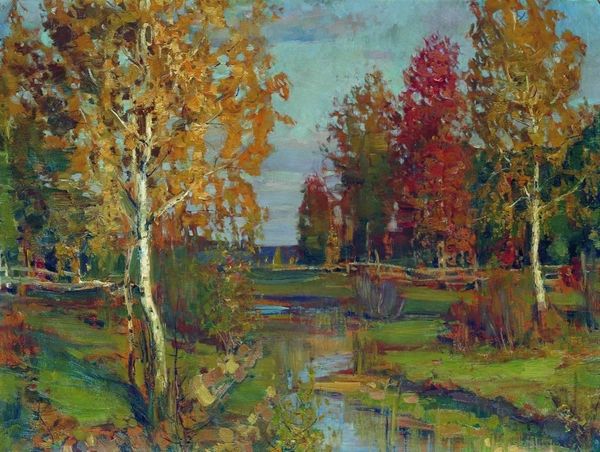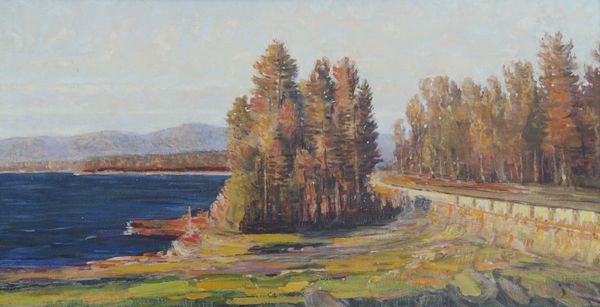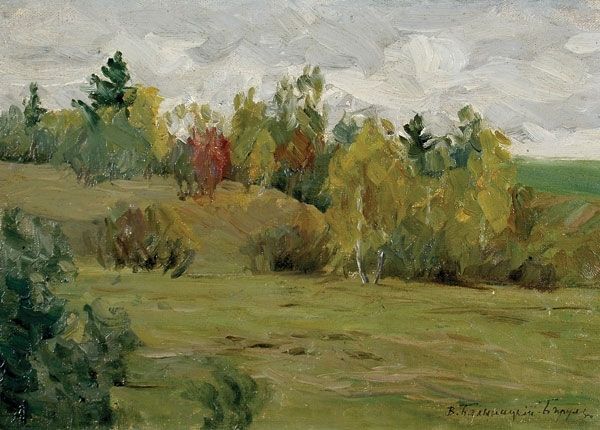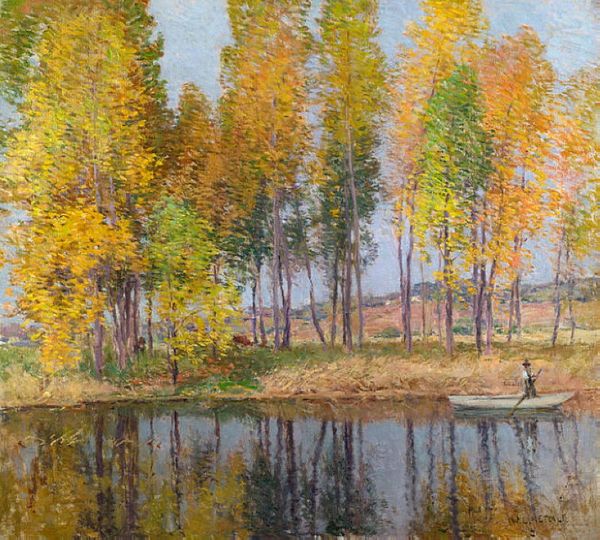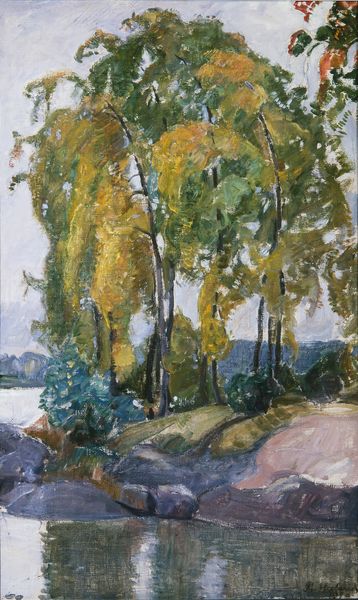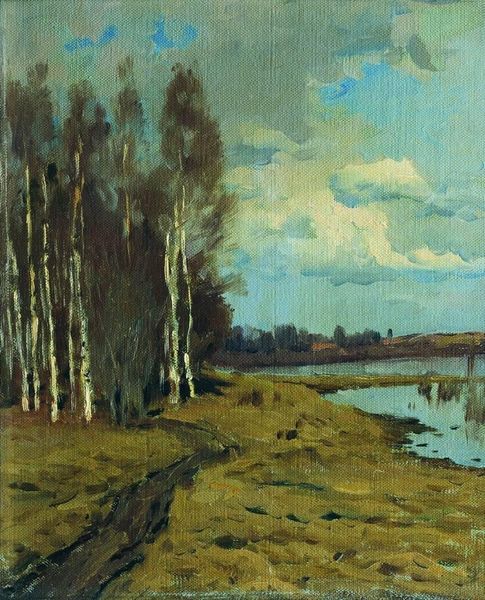
Copyright: Public domain
Curator: Immediately, I feel this warmth... It's like the last embrace of summer clinging on as the days grow shorter. Editor: This is Konstantin Gorbatov's "Autumn Landscape," created in 1929. What draws my attention is the context: Gorbatov was part of the Russian diaspora after the Revolution, and these idealized landscapes often reflect a longing for a lost homeland and past. Curator: Yes! There’s this bittersweetness, a beauty tinged with sadness that gets right into my soul. Look at those strokes! You can practically feel the crisp air rustling those golden leaves. Editor: The impressionistic brushwork, combined with what appears to be plein-air techniques, underscores the immediate sensory experience of nature. There's a deliberate choice here in framing memory through a very particular aesthetic tradition that developed across Europe in the 19th century and was tied to national identities and movements. Curator: But the romance of it! The palette is on fire with those ambers, golds, and that touch of red—absolutely dreamy! And those figures by the water are like memories fading in and out... fleeting! Editor: Consider also how this kind of landscape served as a form of cultural preservation, especially among artists displaced by political upheaval. It reinforced and possibly revised their idea of national identity. The figures by the water may indicate the personal presence in an idealized landscape, humanizing the space. Curator: It’s hard not to see the world as a masterpiece through this artist's eyes! Thanks to Gorbatov for sharing how even decay has beauty and grace. Editor: Indeed. And the image compels us to ask how we create and retain visions of “home,” especially in times of great change. It leaves you thinking about art’s power as both a refuge and an instrument of historical identity.
Comments
No comments
Be the first to comment and join the conversation on the ultimate creative platform.
